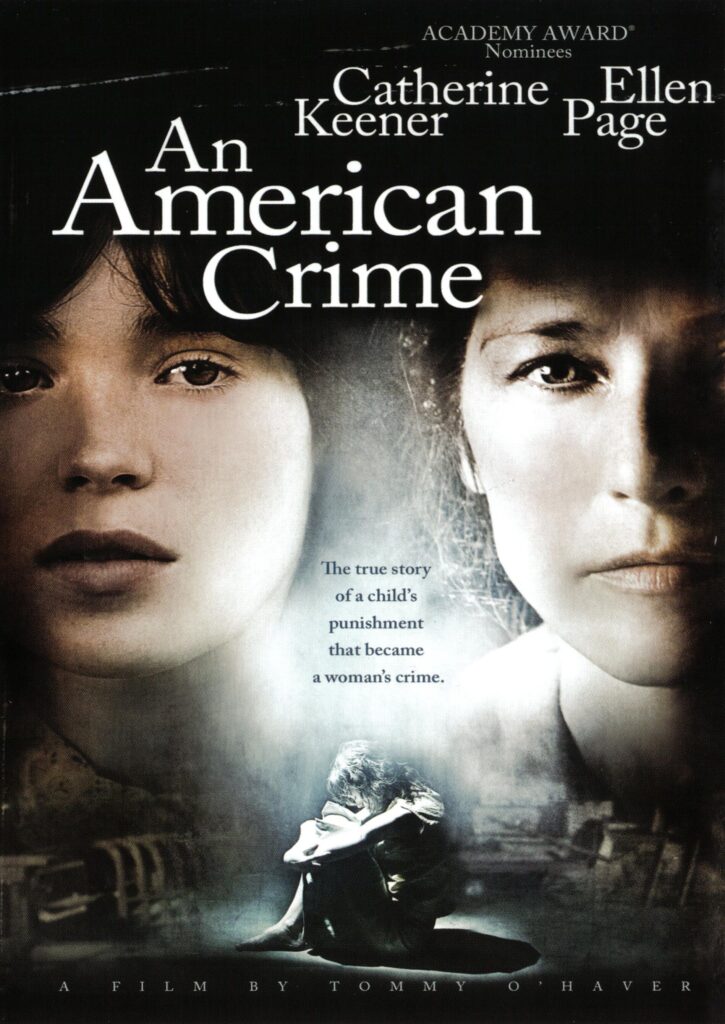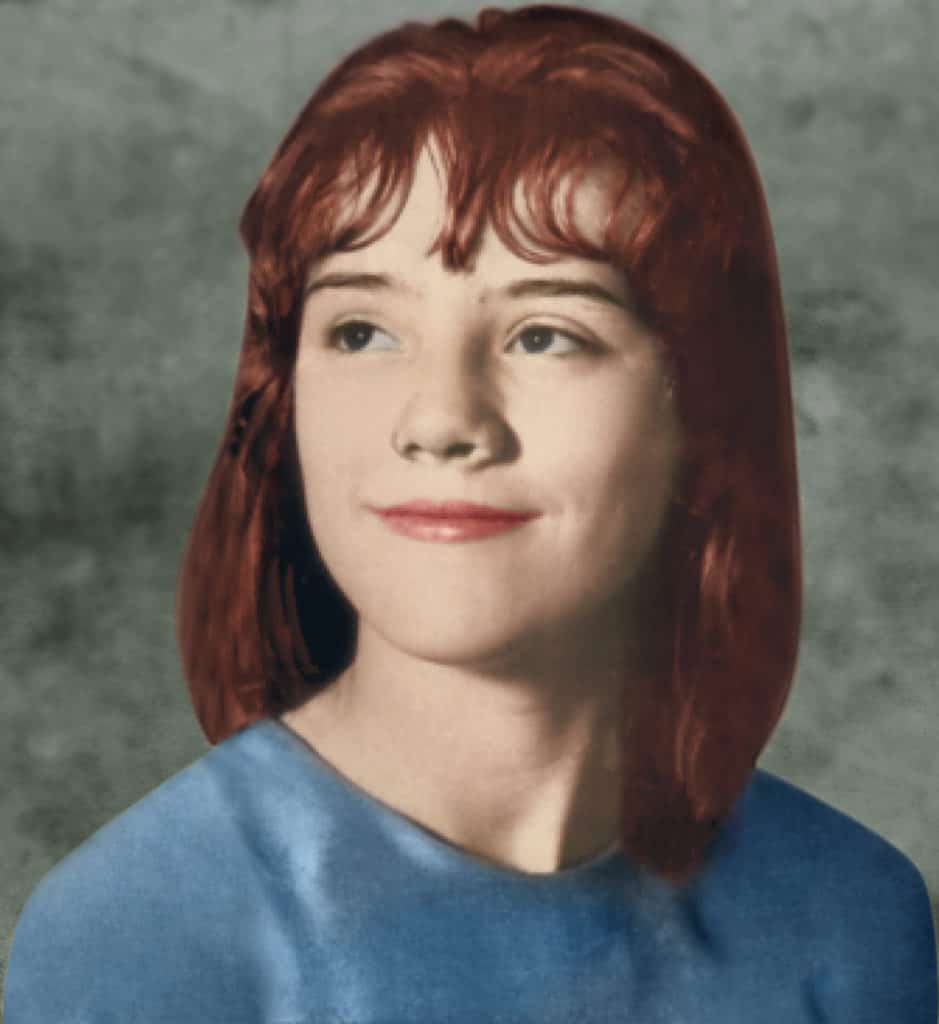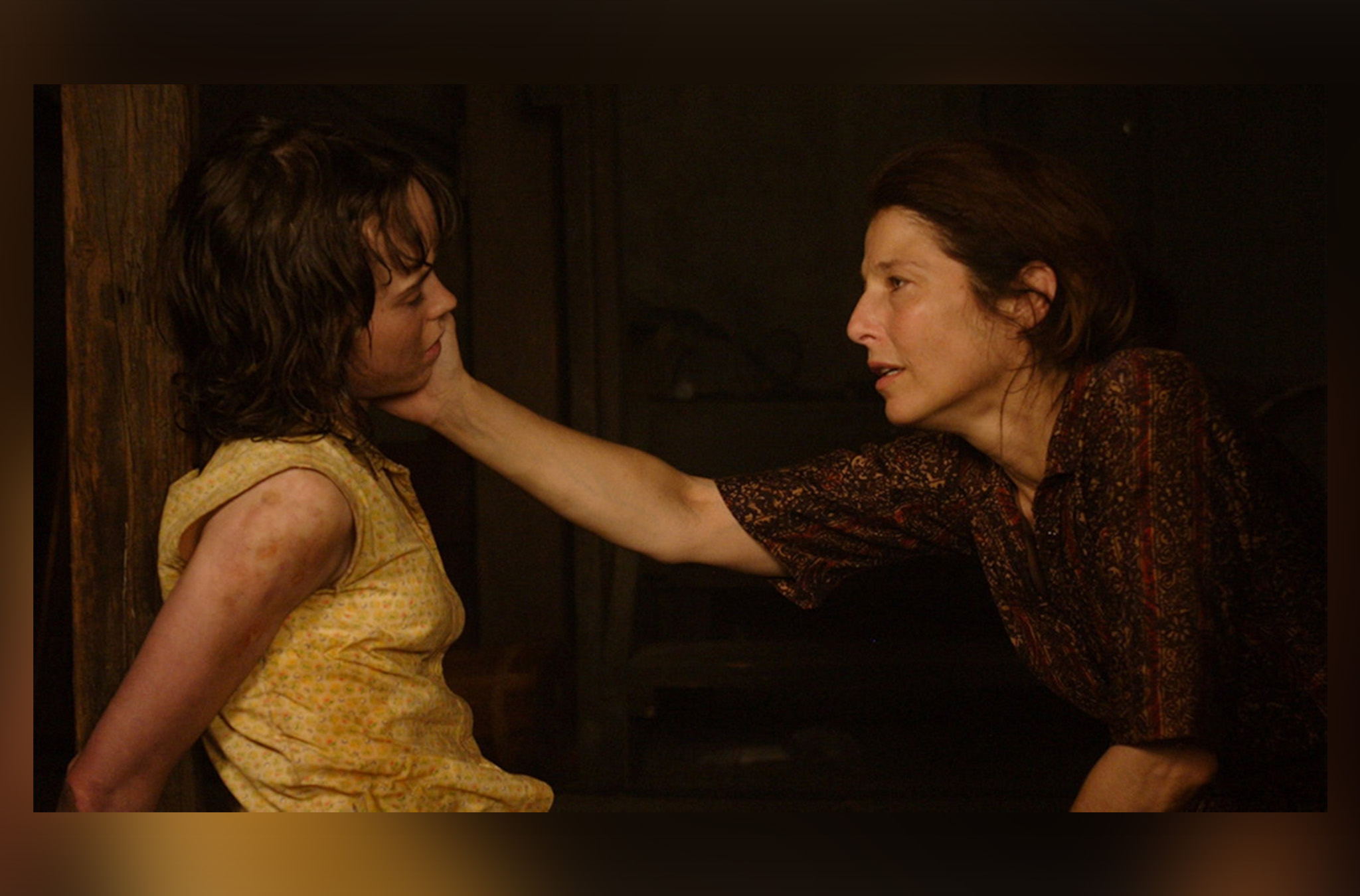NOTE: This page contains movie spoilers and may be disturbing to some readers and viewers. This page contains descriptions of abuse, sexual assault, and murder. Reader and viewer discretion is advised.
An American Crime is available to stream periodically on Netflix, Amazon Prime, and can be found to rent, buy, or stream on most major video app stores.
The movie is true to the events of Sylvia’s life, with slight artistic license for filmmaking

An American Crime jumps right into the prosecution of Gertrude “Gertie” Baniszewski (pronounced like “Bani-checky”). The film, produced by ER and The West Wing veteran John Wells, uses the court case to frame the events surrounding Sylvia Likens’ murder. West Wing fans will immediately notice Bradley Whitford, who played Josh Lyman in the White House series, as the prosecutor and one of the earliest characters.
The film’s producers are true to the events of Sylvia Likens, down to the apparent concern of neighbors who suspected abuse, but lived up to the 1960s-era belief “we best stay out of it” mentality. But there are discrepancies between the actual events and An American Crime:
- The film portrays nearly all the events in Indianapolis. It is true Sylvia was murdered at Baniszewski’s home on east New York Street, but Sylvia, her sister Jennie, and their parents largely lived in Lebanon, Indiana. There is brief mention of Lebanon, but does not make clear Lebanon was the girl’s home.
- The movie shows Baniszewski as a complex person fueled by drugs, which is true. But the film shows her coming on to young men, some of whom are still in high school and likely underage. This sexually predatory behavior is possible, but not documented anywhere else and unsupported by court testimony. It is mostly a film adaptation to encourage viewers to further dislike her or distrust her.
- The film portrays additional characters, like Eric, a handsome young man Sylvia meets in school who serves as a little-mentioned “white knight”, upstanding and caring. That may be true, but is not documented anywhere and Eric is largely fictional. The dramatic license of the film to have a character like this is fleeting and unfinished.
At times the film suggests Sylvia’s death stemmed from miscommunication and escalating dysfunction rather than premeditated cruelty. This risks softening the brutality of what actually occurred. An American Crime accurately summarizes the events in order, but compresses it into about a week. In truth, Sylvia’s abuse lasted for about four months, from July to October 1965:
- Sylvia’s parents work in county and state fairs, traveling for long stretches.
- Everyone — from Baniszewski to Sylvia’s parents — are facing extreme economic hardship.
- Sylvia’s parents leave her and her younger sister Jennie, who wore leg braces from surviving Polio, with Baniszewski after their father meets her through a church event. While mostly a stranger, Baniszewski needs money, Sylvia’s father doesn’t have much but does have some, and the arrangement works to their benefit to keep the kids in one spot.
- Sylvia meets Paula, one of five other kids in the Baniszewski household and the oldest among the family. The film does not explore how the elder Baniszewski became a single mother of five, but implies this is likely from loose behavior with young men half her age.
- When Sylvia’s father allegedly fails to send $20 every other Thursday, Baniszewski begins to whip Sylvia and Jennie as punishment for “taking care of them for nothing.” It is unknown whether the money was sent or not, lost in the mail, or what is at fault for this alleged failure.
- Paula gets pregnant from a married man she briefly gushes over, confides in Sylvia, and demands she promise not to tell anyone.
- When Sylvia witnesses Paula being manhandled by her lover, she tells her to stop and proclaims she’s pregnant. This outing causes Paula to become bitter.
- When word spreads about Paula’s pregnancy, Baniszewski encourages her to “get even” by hitting her.
- As money dwindles, rumors — however true — spread, and Paula and Baniszewski become more irritated at the truth and reality of the situation, they take out that frustration on Sylvia who bravely stands in for Jennie.
- Neighborhood boys, like Ricky Hobbs, are shown with clearly conflicting emotions and how pressure from other kids and adults can alter their behavior.
- Neighborhood residents, like the reverend who knows the truth about Paula’s actual pregnancy, seem suspicious but don’t act or call the police. This despite Baniszewski’s perceived low status and respect among neighbors.
An American Crime shows raw human nature often missing from written records
An American Crime displays a sense of humanity to everyone involved, even if that humanity is warped, in ways reading about the events often fail to describe. Watching the film shows how a mob mentality can take control over people in ways they would never normally behave. It also shows how little Johnny Baniszewski, about 9 or 10 years old, is clearly mentally unstable. In one scene, Johnny is tasked with feeding a dog on a chain in the back yard but clearly enjoys some thrill with taunting the dog and ultimately putting a bowl of food just out of the dog’s reach.
The film goes as far as a PG-13 rating can reasonably go showing whippings, beatings, and the infamous use of a glass Coca-Cola bottle inserted to the breaking point in Sylvia’s lower extremities.
The alternate possibility preventing Sylvia Likens’ death

In one flourish available to filmmaking, the movie draws to a close showing a fictional alternate reality where Paula comes to her senses and helps Sylvia escape the basement she was chained in for days, suffering from burnings, lashings, kicking, and severe dehydration.
Realizing Sylvia was never to blame for any alleged slight or the reason for her pregnancy, and to the contrary was perhaps her closest friend and champion, Paula hoists her out of the basement and outside where she distracts Baniszewski until Ricky Hobbs helps her escape by car to Portage, Indiana, where it’s believed her parents are.
They arrive in Portage where her parents comfort her and they return to the Baniszewski home to get Jennie. But as the door opens, the film shows Sylvia vanish into a ghostly apparition as the kids — of all ages — inside realize Sylvia is dead. Baniszewski is repeatedly heard saying “She’s not dyin’. She’s lying.”
In court, as in real life, Baniszewski denied any wrongdoing and, at most, said everyone was lying. The film implies the strong medication she was on for a cough and perhaps other mental illness, were to blame. Those medications include phenobarbitol — the same muscle relaxant used in executions — and Corcidin. But this is not part of the original testimony. Court records call her “ill and frail.”
Anyone who is familiar with Sylvia Likens, her life, and her death will appreciate the film. Actors like Whitford and James Franco provide compelling performances. The scenes are true to the era, and the court testimony provides an accurate framing of the events.
The film ends with Baniszewski’s sentencing, showing her sentenced to life in prison only to be paroled after 20 years after admitting to everything. She died five years after leaving prison, in Iowa, under the name Nadine Van Fossan.
Paula is sentenced to two years in prison and delivers her baby in prison, which she reportedly named Gertrude, but this is debated and not fully known. Paula changed her name and hid from the public after leaving prison and the baby would have been placed immediately into foster care.
Johnny, the young boy, was sentenced to a juvenile facility for his vicious role in beating Sylvia. He was and remains the youngest person ever sentenced for murder in Indiana.
Ricky Hobbs, the reluctant participant and high school age boy who seems perpetually on the verge of doing good and not, is sentenced to three years for manslaughter. He died at age 21 from cancer. It’s unknown what kind, but the film suggests lung cancer as a result of the constant smoking everyone is shown doing.
Perhaps most chilling is when asked by the Prosecutor, “Why did you do it?” Everyone responds with the same bewildered phrase: “I don’t know, sir.”
What came after Sylvia’s death
What the film doesn’t fully explore is the profound impact Sylvia’s death had on Indiana and the country. In response, Indiana lawmakers strengthened mandated reporting laws, especially for clergy and professionals, and eventually extended them to everyone. Sylvia’s death was a moment that many residents across Indiana and the US realized more had to be done to protect kids. That it is our business to help protect kids.
Sylvia’s CAC stands today in her native home of Lebanon as a monument to her and kids like her. You can learn more about our work, how we help kids after informed reports of abuse, and ways you can support our work with a donation.
Donations support Sylvia’s CAC
Forensic interviews and victim advocacy services are provided at no-cost to families. Transportation, prevention education, office supplies, our lease, utilities, and more are paid for by donations.
